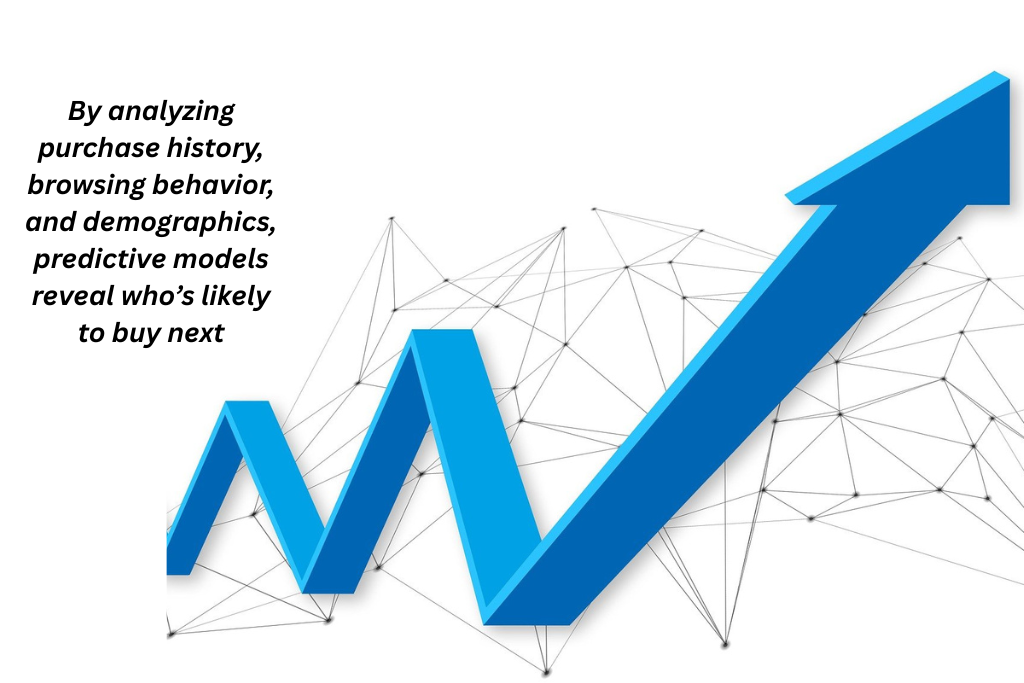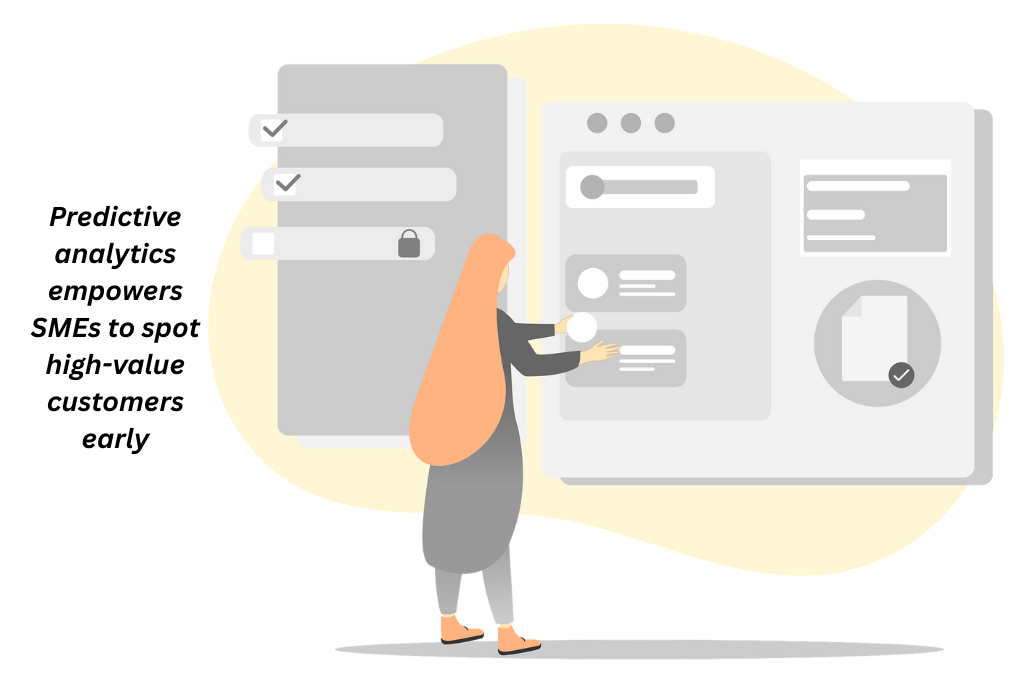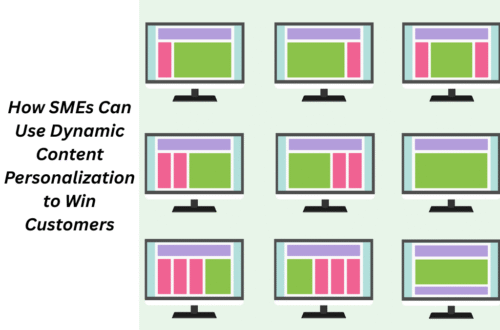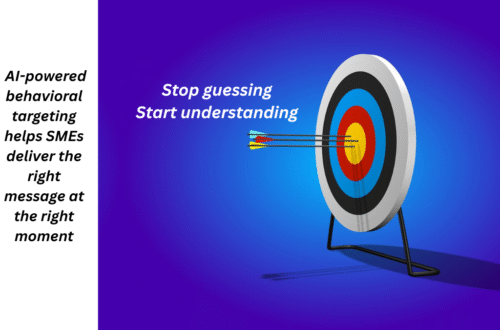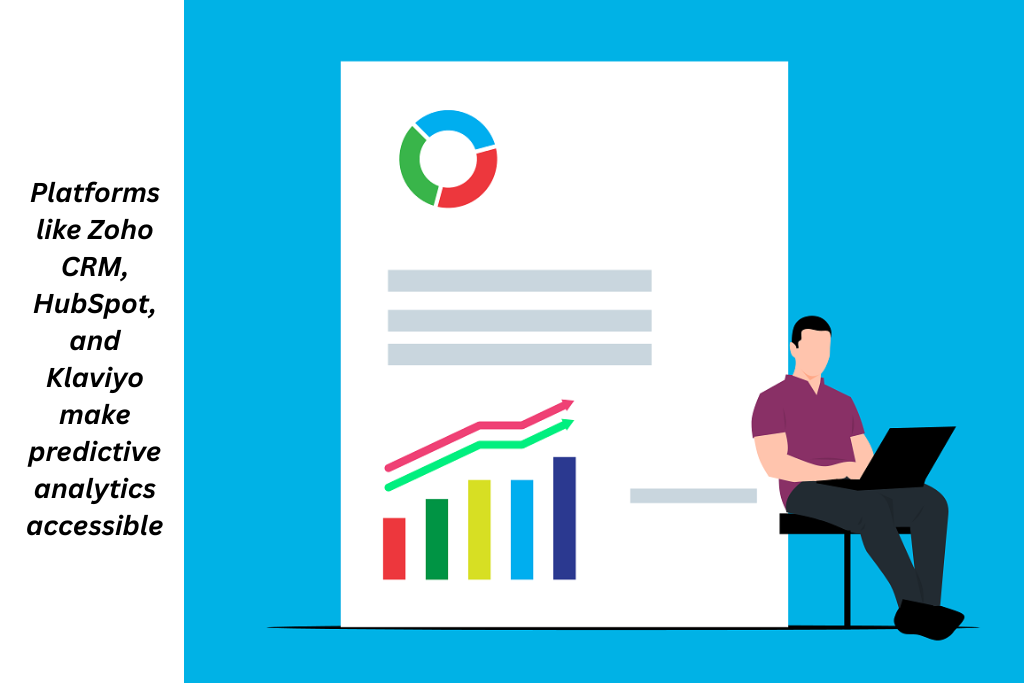
How Predictive Analytics Can Help You Identify Your Next High-Value Customers Before Your Competitors Do?
The digital economy is moving faster than ever. During this swift shift, a brand that wins customers often wins them for life. Getting a repeat e-commerce buyer before your competitors can make all the difference. Predictive analytics helps you with that. The global predictive analytics market will surpass $40 billion by 2030 and will become crucial for businesses of all sizes.
Especially for SMEs, the future analysis is a competitive advantage. Using data and AI-powered insights, SMEs can identify their next high-value customers before competitors do. This ensures clever targeting, strong retention, and efficient development.
Predictive analytics is to see the past and forecast the future. This means that instead of relying on gut feeling, businesses use data. This include
- Purchase History
- Browsing behavior
- Demographic details
To make this possible, companies rely on:
- Machine learning models that learn patterns from data and improve over time.
- AI-powered insight that goes beyond the simple report and suggests what action should be taken by businesses.
- Customer behavior analysis to track habits like frequency of purchase, cart abandonment, or product preferences.
It’s also important to understand how predictive analytics differs from other types of analytics:
- Descriptive Analytics discusses what happened. (e.g., sales reports).
- Diagnostic Analytics suggests why it happened (e.g., customer churn analysis).
- Predictive Analytics explores what’s likely to happen next. (e.g., which customers are most likely to buy again).
Why High-Value Customers Matter?
Indeed, not all customers contribute equally to business growth. In fact, roughly 220% of customers generate 80% of revenue. These are your high-value customers, and identifying them early is a bonus point for your strategy.
Key traits of high-value customers include:
- Loyalty is the customers keep coming back. It also reduces the cost of acquisition.
- High life value (LTV) because their long-term spending is more than other customers.
- Advocation, because they are more likely to recommend your brand, leave positive reviews, or refer to friends.
- However, if you do not attend to these customers and adjust quickly, you may not be competitive. Remember that once they build loyalty elsewhere, winning them back will be more expensive, and sometimes it will be impossible. This is why businesses that take advantage of predictions receive a real benefit. They can identify these customers before the competition also notices them.

How Predictive Analytics Identifies High-value Customers?
Predictive Analytics suggests who is most likely to become the next loyal and high-spending customer. This is done by analyzing several data points and applying the AI-driven model.
Here’s how it works:
- It tracks behavioral patterns. This includes purchase frequency, browsing activity, abandoned carts, and brand interactions to identify strong buying intent.
- It covers the demographics and psychographic data. This highlights which age group, location, or lifestyle segments are most likely to be transformed into buyers.
- Customers provide scores on how they are likely to purchase or upgrade another high-value product.
- Flags at-risk customers who can still be valuable if they are re-associated with the right proposals at the right time.
- By combining these insights, businesses can focus marketing efforts on customers with the highest possible lifetime value rather than spreading resources.
Predictive Analytics gives SMEs a chance to compete against big brands.
- SMEs identify prospects that are most likely to convert businesses and run highly targeted campaigns.
- They can build stronger customer loyalty through early personalization. They can offer tailored and timely recommendations.
- They earn higher marketing ROI as they focus their spending on the right audience.
Real-World Applications of Predictive Analytics
If you think that Predictive Analytics is just a discussion, then you are wrong. It is already shaping businesses and industries and helping them to attract and retain customers. For example:
- In e-commerce, it provides personal product recommendations based on browsing and purchase history.
- In retail, it identifies seasonal buyers. Predictive analytics helps in predicting shoppers and optimizing inventory before the demand goes up.
- In subscription businesses, it forecasts customer lifetime value and spots early churn signals.
- For SMEs, the affordable predictive tools help to run highly targeted marketing campaigns without needing a massive budget.

Predictive Analytics Tools and Technologies for SMEs
Predictive analytics is not as difficult as you think. There are many cost -effective equipment that are now within your reach. By selecting the correct blend of inexpensive and AI-powered tools, SMEs can compete with large players and unlock actionable insight from their data. For example:
- Platforms such as Google Analytics, Zoho CRM, and HubSpot are inexpensive to start with customer behavior forecasts.
- Tools such as Segment, Klavio, and Pave AI offer future partitions and individual recommendations.
- Many predictive tools are planned directly into CRM and marketing automation systems, ensuring a smooth flow of insight into daily campaigns. This makes it easy to adopt a complete technique without the need for an overhaul.
What are the Challenges SMEs Face and How to Overcome Them?
While the future analytics provides great ability, SMEs need to take care of general challenges. Predictions are only as good as they are based on data on which they are based. Incomplete or incompatible data can cause misleading insight. To avoid it, clean the major customer data and start small by using the underlying verification facilities in the CRM.
Remember that highly individual campaigns may feel aggressive and can damage the data misuse. So be transparent about data usage and comply with GDPR/CCPA. By dealing with these obstacles, SMEs can unlock the benefits of future analytics without falling into the common mesh.
Conclusion
Predictive analytics gives businesses the power to identify and engage high-value customers earlier than competitors. For SME, it means a future where future analytics are no longer a large-brand benefit, but a smart, trust-operated customer is an accessible tool to compete on customer acquisition.



